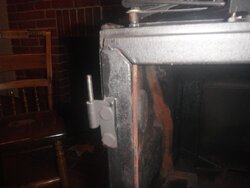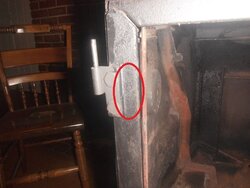I am rebuilding my Winterwarm Large (detailed in another thread) but have come upon something that I think deserves it's own topic. One of the problems with these stoves is that, because of the multi-piece construction, the face of the firebox can be uneven. Mine is no exception. In order to get the door gasket to seal correctly some grinding needs to be done, but it still won't get the surface flat.
So the question is what can I use to "butter" the surface to even it out? My first thought is plain stove cement, but I'm worried about it spalling around the edges where it will be very thin. Next idea is a high temp metal filled epoxy.
Anyone have any experience with surface application of fillers on woodstoves?
So the question is what can I use to "butter" the surface to even it out? My first thought is plain stove cement, but I'm worried about it spalling around the edges where it will be very thin. Next idea is a high temp metal filled epoxy.
Anyone have any experience with surface application of fillers on woodstoves?





 I broke out the Dremel and chased the ridges down. It was worse than I thought (of course) - they weren't solid but had actually formed cold shuts, so I had to go about 1/16" into the base metal to get rid of them.
I broke out the Dremel and chased the ridges down. It was worse than I thought (of course) - they weren't solid but had actually formed cold shuts, so I had to go about 1/16" into the base metal to get rid of them. 